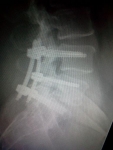I recall reading somewhere that CPAP treatment reduces edema from around the neck. Perhaps this simply results in a redistribution of fluid to other parts of the body e.g. feet/ankles.
Here are a few abstracts looking at the interaction between fluid and upper airway function/OSA:
http://www.ncbi.nlm.nih.gov/pubmed/1843 ... d_RVDocSum
"We previously showed that rostral fluid displacement by lower body positive pressure (LBPP) narrows the
upper airway (UA) and increases UA resistance, but effects on UA collapsibility remained unknown. To
test if LBPP increases UA collapsibility, 13 healthy men were randomized into a control or LBPP arm then
crossed over into the other arm with a 30-min washout in between. LBPP was applied by inflating antishock
trousers wrapped around both legs to 40mmHg. UA collapsibility was assessed by determining UA
critical closing pressure (Pcrit) during application of different negative airway pressures. Pcrit and leg fluid
volumewere measured at baseline and after 5 min during both periods. LBPP caused a significant increase
in Pcrit associated with a reduction in leg fluid volume. We conclude that rostral fluid displacement by
LBPP increases UA collapsibility in healthy men, suggesting that fluid shift into the neck could increase
UA collapsibility during sleep and thereby predispose patients with fluid overload states to obstructive
sleep apnea."
http://www.ncbi.nlm.nih.gov/pubmed/1901 ... d_RVDocSum
"RATIONALE: The cause of increased pharyngeal collapsibility in patients with obstructive sleep apnea (OSA) is incompletely understood. In awake healthy subjects, we showed that fluid displacement from the legs into the neck induced by lower body positive pressure reduces upper airway size and increases its collapsibility. Prolonged sitting leads to dependent fluid accumulation in the legs. OBJECTIVES: To test the hypotheses that the apnea-hypopnea index (AHI) during sleep will be related to the amount of fluid spontaneously displaced from the legs overnight, and that this will, in turn, be related to the time spent sitting the previous day. METHODS: In 23 non-obese healthy men refereed for sleep studies for suspected OSA, we assessed the changes in leg fluid volume and in neck circumference from the beginning to the end of the night, and the time spent sitting during the previous day. RESULTS: The overnight change in leg fluid volume correlated strongly with the AHI (r = -0.773, p<0.001), the change in neck circumference (r = -0.792, p<0.001) and the time spent sitting (r = -0.588, p=0.003). Multivariate analysis showed that the only significant independent correlates of the AHI were the overnight changes in leg fluid volume and neck circumference which, together, explained 68% of the variability in the AHI among subjects. CONCLUSIONS: These novel findings suggest that overnight rostral fluid displacement from the legs, related to prolonged sitting, may play a previously unrecognized role in the pathogenesis of OSA in non-obese men that is independent of body weight."
http://www.ncbi.nlm.nih.gov/pubmed/1900 ... d_RVDocSum
"Fluid shift from the legs to the neck induced by lower body positive pressure (LBPP) increases upper airway (UA) collapsibility in healthy men. Rostral fluid displacement during recumbency may therefore contribute to the pathogenesis of obstructive sleep apnea (OSA). There is a higher prevalence of OSA in men than in women. We therefore hypothesized that UA collapsibility increases more in men in response to rostral fluid displacement than in women. UA collapsibility was assessed in healthy, non-obese men and women while awake by determining UA critical closing pressure (Pcrit) during application of different suction pressures to the UA. Subjects were randomized to 5-minute control or LBPP arms after which they crossed-over into the other arm following a 30-minute washout. LBPP was applied by inflating anti-shock trousers wrapped around both legs to 40 mmHg. Pcrit, leg fluid volume, and neck circumference were measured at baseline and after 5 minutes of both control and LBPP periods. LBPP caused a decrease in leg fluid volume and an increase in neck circumference that did not differ between men and women. However, compared to the control period, LBPP induced a much greater increase in Pcrit in men than in women (7.2 +/- 1.8 vs. 2.0 +/- 1.5 cm H2O, P = 0.035). We conclude that rostral fluid displacement by LBPP increases UA collapsibility more in healthy, non-obese men than in women. This may be one mechanism contributing to the higher prevalence of OSA in men than in women."












